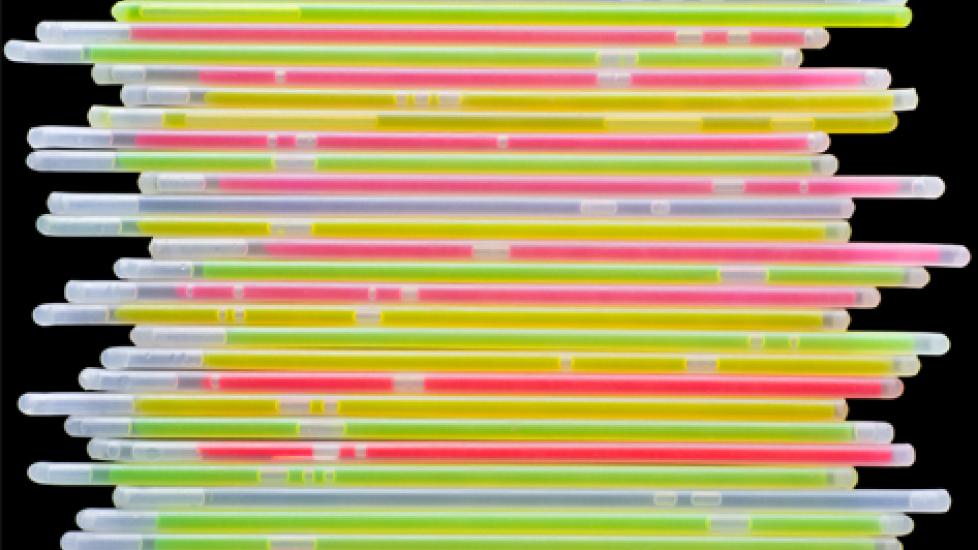Title: A Bright Nightmare: Understanding and Preventing Adverse Reactions in Dogs to Glow Stick Jewelry
Introduction:
In the vibrant world of canine accessories, glow stick jewelry has become a popular choice for pet owners looking to keep their furry friends visible at night. However, not all dogs react positively to these luminous trinkets. Some may experience adverse reactions that range from mild discomfort to severe health issues. It is crucial for dog enthusiasts to understand why such reactions occur and how they can be prevented. This article aims to shed light on this glowing dilemma faced by our beloved pets.
Understanding the Chemistry Behind Glow Sticks:
Glow sticks contain two chemicals—a dye and an activator—that, when mixed together, create a chemical reaction resulting in a brightly colored glow. While non-toxic to humans, these substances might pose risks to animals with sensitive skin or those prone to allergies. The strong smell emanating from activated glow sticks could also trigger negative responses in some dogs.
Common Adverse Reactions Observed:
1. Skin Irritation: Many dogs develop rashes, hives, or redness around the area where the glow stick touches their skin due to the chemicals’ caustic nature.
2. Allergic Reactions: In more severe cases, dogs might exhibit symptoms like swelling, difficulty breathing, or gastrointestinal upset as a result of allergic sensitivities triggered by the glow stick components.
3. Anxiety and Fear: The sudden change in appearance and odor associated with glow sticks can startle dogs who are already anxious or timid, leading to behavioral changes.
4. Lack of Interest: Some pups simply do not enjoy wearing anything on their bodies and will resist or remove the glow stick adornments despite initial enthusiasm.
Prevention Strategies:
1. Consult Your Veterinarian: Before introducing any new product to your dog’s environment, it’s wise to consult with a professional about potential risks based on your pet’s specific health history.
2. Monitoring: Keep a close eye on your dog’s behavior after exposure to glow sticks. Any signs of distress should prompt immediate removal of the item and veterinary attention if necessary.
3. Alternatives: Consider using reflective collars or harnesses instead of glow stick jewelry. These items provide visibility without direct contact with the dog’s skin, reducing the risk of irritation.
4. Test Run: If you suspect your dog might have a positive response to glow sticks but want to ensure safety, try a brief test period under supervision to observe any adverse effects before prolonged use.
5. Educate Yourself: Stay informed about the latest research regarding pet products to make well-informed decisions that prioritize your pup’s welfare over novelty trends.
Conclusion:
While glow stick jewelry can undoubtedly enhance visibility during evening walks, it is essential to approach its use with caution and awareness of possible adverse reactions among our four-legged companions. By understanding the chemistry behind these products and being vigilant about monitoring our pets’ responses, we can help ensure that every walk under the stars remains a safe and enjoyable adventure for both us and our loyal friends.
